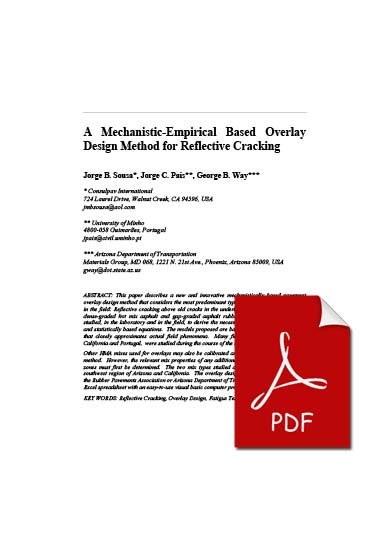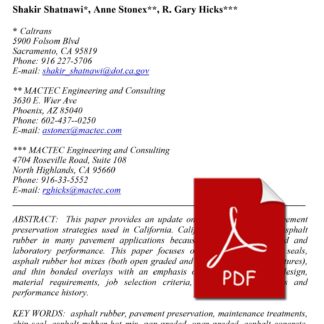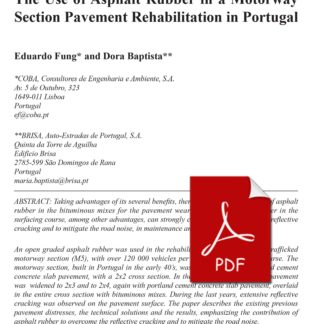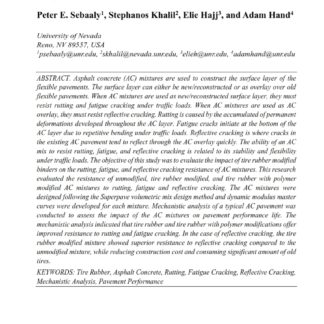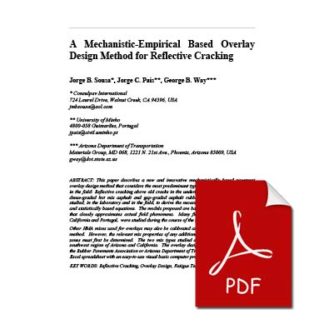Description
This paper describes a new and innovative mechanistically based pavement overlay design method that considers the most predominant type of overlay distress observed in the field: Reflective cracking above old cracks in the underlying pavement surface. Both dense-graded hot mix asphalt and gap-graded asphalt rubber (wet process) mixes were studied, in the laboratory and in the field, to derive the necessary mechanistic relationships and statistically based equations. The models proposed are based on a finite element model that closely approximates actual field phenomena. Many field test sections, in Arizona, California and Portugal, were studied during the course of the research.
Other HMA mixes used for overlays may also be calibrated and used through the proposed method. However, the relevant mix properties of any additional materials or environmental zones must first be determined. The two mix types studied are mainly used in the desert southwest region of Arizona and California. The overlay design program is available from the Rubber Pavements Association or Arizona Department of Transportation in the form of an Excel spreadsheet with an easy-to-use visual basic computer program (macro).

